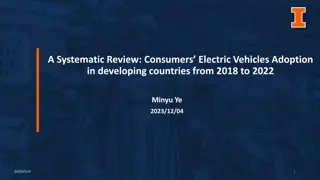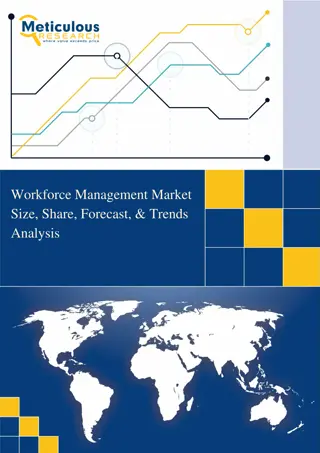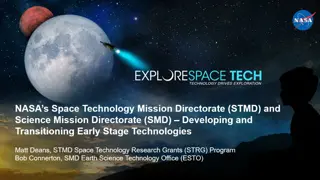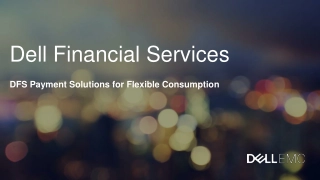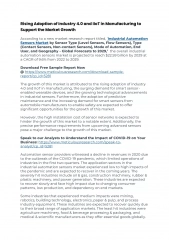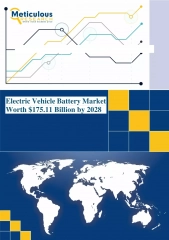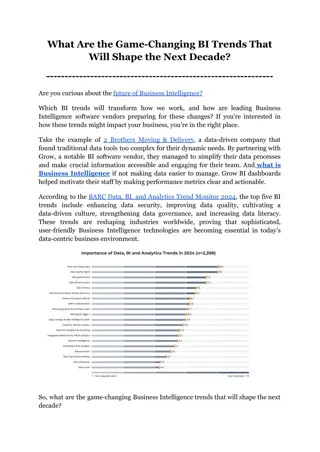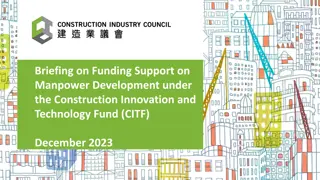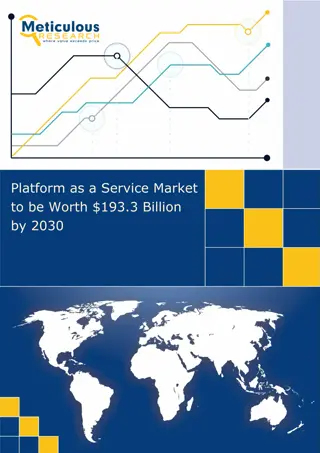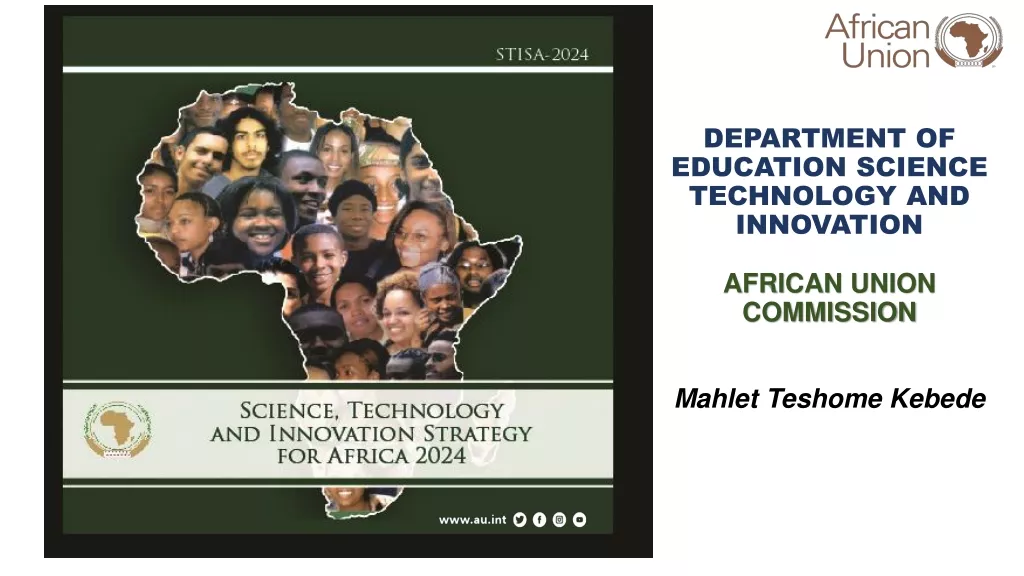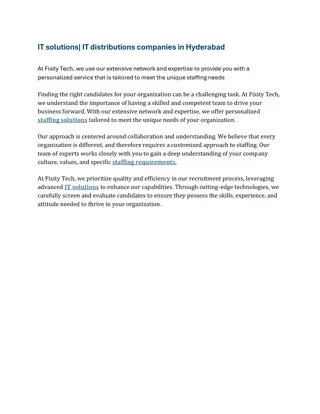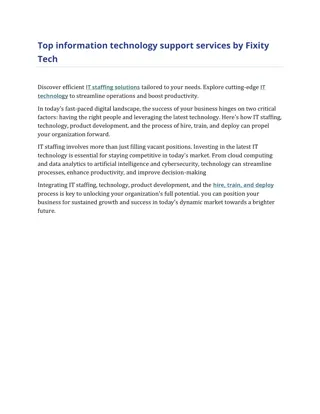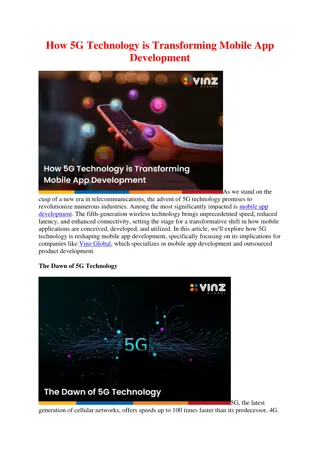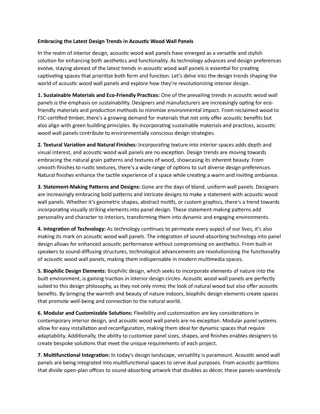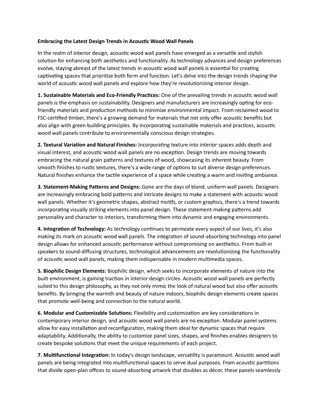
Trends and Predictions in Technology Adoption
In an era where global logistics and supply chain operations are increasingly under pressure to evolve with market demands, the technologies around cargo pricing are rapidly becoming focal points for innovation. Advances by entities like Revenue Technology Services are setting new standards for how the industry approaches pricing strategies. The integration of cutting-edge technology, especially in the realm of dynamic pricing, promises to redefine how cargo is priced in the foreseeable future.n
Uploaded on | 1 Views
- cargo revenue management
- cargo cloud solutions
- cargo pricing
- cargo revenue
- cargo solutions
- cargo strategy consulting
Trends and Predictions in Technology Adoption
PowerPoint presentation about 'Trends and Predictions in Technology Adoption'. This presentation describes the topic on In an era where global logistics and supply chain operations are increasingly under pressure to evolve with market demands, the technologies around cargo pricing are rapidly becoming focal points for innovation. Advances by entities like Revenue Technology Services are setting new standards for how the industry approaches pricing strategies. The integration of cutting-edge technology, especially in the realm of dynamic pricing, promises to redefine how cargo is priced in the foreseeable future.n. Download this presentation absolutely free.
Presentation Transcript
The Future of Cargo Pricing: Trends and Predictions in The Future of Cargo Pricing: Trends and Predictions in Technology Adoption Technology Adoption
In an era where global logistics and supply chain operations are increasingly under pressure to evolve with market demands, the technologies around cargo pricing are rapidly becoming focal points for innovation. Advances by entities like Revenue Technology Services are setting new standards for how the industry approaches pricing strategies. The integration of cutting-edge technology, especially in the realm of dynamic pricing, promises to redefine how cargo is priced in the foreseeable future. The Current State of Cargo Pricing The Current State of Cargo Pricing At present, cargo pricing strategies tend to be static, with adjustments made periodically based on traditional demand forecasts and historical data. However, this method lacks the flexibility needed in a rapidly changing global market. It often results in either missed revenue opportunities or unsold cargo space. The key challenge lies in predicting variable factors such as fluctuating market demands, changes in fuel prices, and geopolitical impacts, which traditional methods are ill-equipped to manage efficiently.
The Shift Towards Dynamic Pricing The Shift Towards Dynamic Pricing Dynamic pricing is set to revolutionize this scenario. Powered by sophisticated algorithms and real-time data analytics, dynamic pricing allows cargo companies to adjust prices on the fly based on current market conditions and demand. This approach not only enhances revenue optimization but also improves the utilization of cargo spaces. Companies can dynamically adjust pricing strategies, offering competitive rates to customers while maximizing profitability. Revenue Technology Services is at the forefront of this transition, leveraging technology to streamline and optimize cargo pricing. The integration of artificial intelligence (AI) and machine learning (ML) into their platforms enables more accurate and instantaneous data processing, which is crucial for effective dynamic pricing. Predictive Analytics and Machine Learning Predictive Analytics and Machine Learning The future of cargo pricing heavily relies on predictive analytics and machine learning. These technologies can analyze vast arrays of data from various sources, including market trends, consumer behavior, weather patterns, and geopolitical events, to predict future demand more accurately. By understanding these elements, cargo carriers can anticipate price sensitivity and elasticity, adjusting their pricing strategies accordingly. For instance, during peak seasons when demand is high, prices can be adjusted to reflect the increased willingness of customers to pay, whereas in off-peak times, more attractive pricing can help fill cargo spaces that would otherwise go unused. This level of granularity in pricing was not feasible with older systems, which lacked the capability to process and react to real-time global data feeds.
Blockchain Blockchain and Smart Contracts and Smart Contracts Another technological advancement influencing cargo pricing is blockchain. By integrating blockchain technology, companies can enhance transparency and reduce discrepancies in transactions. Smart contracts can automate payment processes and enforce terms based on mutually agreed conditions, which are verified and executed on the blockchain. This reduces delays and disputes over pricing, ensuring smoother operations and trust between parties. Challenges and Considerations Challenges and Considerations Despite the promising advantages, the shift towards technology-driven cargo pricing faces several challenges. One major concern is the need for substantial investment in technology infrastructure and skills development. Companies must be prepared to invest not only in technology but also in training their workforce to adapt to new systems and methods. Additionally, data security and privacy issues are paramount, as reliance on digital systems increases the risk of cyber threats. Ensuring robust cybersecurity measures and compliance with international data protection regulations is critical as companies transition to these advanced technological tools.
Conclusion Conclusion As we look to the future, the adoption of dynamic pricing and other technology-driven practices in cargo pricing is inevitable. Companies like Revenue Technology Services are leading the charge, helping reshape the landscape of global logistics through innovation. The ability to adapt to and invest in these technologies will distinguish the leaders in the logistics sector. With these advancements, cargo pricing is set to become more responsive, efficient, and aligned with the ever- evolving market demands, ensuring sustainability and growth in the logistics industry.
THANK YOU THANK YOU


